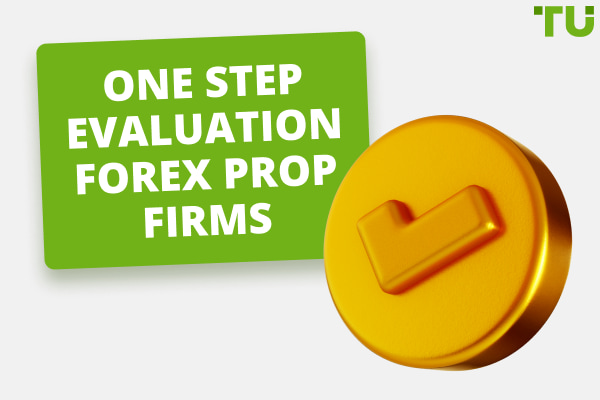Understanding And Managing Risk In Prop Trading
According to successful prop traders, these actions are essential for effective risk management:
-
1
Identify risk factors
-
2
Assess the likelihood and potential impact of each risk
-
3
Prioritize risks based on their significance
-
4
Develop risk management strategies
-
5
Implement diversification techniques
-
6
Determine appropriate position sizing
-
7
Utilize stop-loss orders
-
8
Use capped risk products
-
9
Monitor and adjust risk management strategies
Successfully managing risk is a factor for prop traders to achieve success. One key lesson learned is the need to identify and assess risks in financial markets. Prop traders should then develop a risk management plan, which includes diversification, careful position sizing, strategic placement of stop loss orders, and the utilization of capped risk products to limit exposure. It is important to monitor and adjust trading strategies in response to changing market conditions.
Fund your account with Topstep!Introduction
What is prop trading?
Prop trading is the act of buying and selling of financial instruments using a firm's own funds rather than clients' investments. This approach to trading comes with its own set of risks, so it becomes crucial for prop traders to manage these risks to protect their capital and profitability effectively.
Why is risk management important for prop traders?
Risk management plays a role in prop trading as it safeguards the trader's capital, allowing them to continue their trading activities while generating profits. By managing risk, prop traders can minimize the potential for losses that may negatively impact their careers in trading. And finally the obvious reason, their job depends on it.
What are some of the key risk factors that prop traders face?
Prop traders encounter risk factors such as market volatility, liquidity challenges, credit risks associated with counterparties, operational uncertainties, and compliance, with regulatory requirements. Market risk arises from price fluctuations, in the assets being traded while liquidity risk pertains to the ability to buy or sell positions without impacting market prices. Credit risk is about the possibility of counterparty's operational risk dealing with system or process failures and legal and regulatory risk involves compliance with laws and regulations.
What are some of the common risk management strategies used by prop traders?
Based on interviews of reputed prop traders, common risk management strategies include:
-
Diversification by spreading their investments across assets to reduce exposure to the performance of an asset
-
Position sizing to determine how much capital should be allocated for each trade based on their tolerance for risk and overall portfolio objectives
-
Stop-loss orders to limit losses by exiting a position if it reaches a predetermined price level
-
Capped risk products, such as options or structured products, to define the potential loss
These aspects will be discussed more in detail as we proceed with the guide.
What to expect in this article
In this article, the experts at TU will explore risk management techniques for traders covering factors contributing to risks, commonly used strategies for managing risks, and practical tips for effective risk management.
Section 1: Identifying and assessing risk
Managing risk is the first step in the journey towards success for traders. To effectively handle risks, proprietary traders follow steps that involve recognizing and evaluating risk as well as implementing strategies for risk management.
What is risk identification?
Risk identification refers to the process of identifying and understanding the various risks encountered by proprietary traders during their trading activities. These risks encompass market risk, liquidity risk, credit risk, operational risk, and legal and regulatory risk. In practise, most prop traders focus largely on market and liquidity risks, as the other three are practically hygiene factors to be considered.
What is risk assessment?
After identifying risks, proprietary traders must assess them by considering both, their likelihood and potential impact. This evaluation allows traders to prioritize risks based on their significance and potential consequences.
How do prop traders identify and assess risk?
For obvious reasons, the ability to understand and mitigate risk as a prop trader is crucial for safeguarding and expanding one’s capital. Here are five important aspects that most prop traders focus on when identifying and assessing risks.
Market analysis
Prop traders initiate their risk assessment process by conducting market analysis. This involves scrutinizing the landscape, geopolitical events, and industry-specific factors that have the potential to impact asset prices. To identify market risks, they utilize both fundamental analysis (evaluating the financial health of companies and economies) and technical analysis (examining historical price patterns and trends).
Volatility evaluation
Volatility plays a role in determining the level of risk in trading activities. Prop traders evaluate volatility by analyzing price movements and indicators of historical volatility, as well as by staying informed about market news developments. This aspect is important, as only by understanding volatility dynamics can traders anticipate price fluctuations and adjust their strategies accordingly.
Position risk analysis
Prior to entering into any trade, prop traders carefully assess the risks associated with it. This entails estimating the loss that could be incurred if the trade moves unfavorably against them. Factors taken into consideration include entry/exit points, and position size, as well as establishing appropriate stop loss levels in order to ascertain a favorable risk-reward ratio for each trade.
Correlation analysis
When prop traders analyze their portfolios, they carefully consider the correlation between assets or positions. Correlation measures how closely the price movements of two or more assets are linked. By examining correlations, traders can identify opportunities for diversification and minimize the risk of overexposure. Though beginners might find it highly complex, big-ticket prop traders often employ rigorous statistical analysis tools in their trades, such as the correlation matrix.
Scenario analysis
Prop traders engage in scenario analysis to prepare for market conditions that may arise. This involves simulating scenarios and evaluating how they would impact their portfolio. For instance, traders assess how their positions would perform in bearish markets during downturns or when unexpected news events occur. Through scenario analysis, traders develop contingency plans and adjust their risk management strategies accordingly.
Section 2: Developing and implementing a risk management plan
In this section, the experts explore the components of a risk management plan.
What is a risk management plan?
A risk management plan is an approach designed to identify, evaluate, and mitigate the risks that proprietary traders face during their trading activities. This plan outlines strategies and processes aimed at safeguarding traders' capital, while ensuring that their trades remain within their level of risk tolerance.
What are the key components of a risk management plan?
A risk management plan can be broken down into two simple parts:
Risk identification
This involves recognizing and comprehending the potential risks that traders may encounter. Each type of risk requires tailored approaches for mitigation.
| Risk Factor | Likelihood (Low, Medium, High) | Impact (Low, Medium, High) | Mitigation strategy |
|---|---|---|---|
Market risk |
High |
High |
Diversify portfolio, use stop-loss orders |
Liquidity risk |
Medium |
Medium |
Monitor trade sizes, avoid illiquid currency pairs |
Credit risk |
Low |
High |
Trade with reputable brokers, monitor accounts |
Operational risk |
Medium |
Medium |
Implement redundancy, use reliable trading tools |
Legal and regulatory |
Low |
High |
Stay updated on regulations, adhere to compliance |
Risk evaluation
After recognizing the risks, prop traders need to evaluate the likelihood and potential impact of each risk. This evaluation allows traders to understand the severity of each threat and prioritize their efforts to minimize these risks.
How do prop traders develop and implement a risk management plan?
To effectively manage risks, prop traders employ these strategies:
Diversification
Prop traders distribute their investments, across assets, markets, or instruments. This helps reduce the impact of trade on their portfolio and minimizes the risk associated with the performance of a single asset. In practise, some prop traders diversify even across various prop trading firms.
Position sizing
Prop traders carefully determine the amount of capital to allocate to each trade based on their risk tolerance and overall trading objectives. This ensures that they avoid overcommitting to a position.
Stop loss orders
Prop traders utilize stop-loss orders as a measure to limit losses if a trade goes against them. These orders automatically close the trade when it reaches a predetermined price level thus minimizing losses.
Using capped-risk products
Some prop traders choose capped-risk products like Nadex Binary Options that offer a fixed level of risk. Incorporating instruments into their strategies allows them to manage risks effectively.
These risk management strategies enable prop traders to gain insights into threats they may face and allocate resources and efforts more efficiently in managing these risks. By integrating these risk management strategies into their trading practices, prop traders decrease their exposure to risk.
Section 3: Monitoring and adjusting risk
Why is it important to monitor and adjust risk?
While monitoring and adjusting risk is often termed as the least exciting aspect of prop trading, it is essential, mainly because of the following reasons.
Adapting to changing market conditions
Financial markets are dynamic with conditions that can swiftly fluctuate. Traders must continuously adapt their risk management strategies to align with the evolving market environment. This enables them to make informed trading decisions that reflect the state of the market.
Responding to shifting risk factors
Risk factors can undergo transformations over time influenced by market dynamics or specific events, impacting the trading landscape. Proprietary traders need to remain vigilant in monitoring these shifts and be prepared to adjust their risk management strategies.
Evaluating performance
Regularly evaluating performance is imperative for traders. By assessing their trading effectiveness, they can identify areas that require improvement. Adjusting risk management strategies based on these evaluations can lead to trading results and profitability.
How do prop traders monitor and adjust risk?
Prop traders utilize a range of tools to effectively monitor and adjust risk, such as:
Regular performance evaluation
Proprietary traders engage in performance evaluations as a means of assessing their trading effectiveness. By adjusting their risk management strategies based on this evaluation they can enhance their trading outcomes.
Reviewing the risk management plan
Regularly reviewing the risk management plan is crucial for traders to ensure that it aligns with their objectives and market conditions. Adjustments should be made as needed to account for changes in the trading environment, risk factors, or trading goals.
Utilizing risk management tools
Utilizing risk management tools is essential for prop traders. These tools include stop-loss orders and position-sizing calculators, which enable traders to monitor and adjust their risk levels in time. Effectively using these tools helps protect positions and ensures they align with the risk management strategy.
Section 4: Key lessons
In summary, diligent risk management plays a crucial role in the journey of prop traders, as it helps them navigate the challenges of markets while safeguarding their capital and increasing their chances of success. Here are some valuable lessons that the experts at TU wish to share with you:
Recognizing and evaluating risks
Successful proprietary traders understand the range of risks they might encounter in their trading activities and the first step towards developing a risk management strategy is comprehending the nature of these risks.
Creating a comprehensive risk management plan
The significance of having a risk management plan cannot be emphasized enough. Budding prop traders need to design a strategy that incorporates risk management techniques. This plan should involve diversification, proper position sizing, utilizing stop loss orders effectively, and using capped risk products like Nadex Binary Options. Every aspect of this plan plays a role in managing risks.
Continuously adjusting
The financial world is characterized by change. Market conditions fluctuate, risk factors evolve over time and a trader's performance may vary. To thrive in this environment, prop traders must commit to monitoring and adjusting their risk management plan accordingly. Being flexible is essential to ensure that the plan remains aligned with the changing market landscape.
Conclusion
In conclusion, successfully managing risk is a factor for prop traders to achieve success. One key lesson learned is the need to identify and assess risks in financial markets. Prop traders should then develop a risk management plan, which includes diversification, careful position sizing, strategic placement of stop loss orders, and the utilization of capped risk products to limit exposure. It is important to monitor and adjust trading strategies in response to changing market conditions. These lessons serve as guidance, for prop traders aiding them in navigating their trading endeavors toward resilience and profitability.
FAQs
How do prop firms manage risk?
Prop firms manage risk through diversification, position sizing, stop-loss orders, and monitoring market conditions.
What is the best risk management for prop firms?
The best risk management for prop firms includes diversification, careful position sizing, robust stop-loss strategies, and staying informed about market conditions.
What is the risk of prop trading?
Prop trading carries market risk, liquidity risk, credit risk, operational risk, and legal and regulatory risk.
What strategies do prop traders use?
Prop traders employ strategies like diversification, position sizing, stop-loss orders, and using capped risk products to manage and mitigate risk effectively.
Glossary for novice traders
-
1
Risk Management
Risk management is a risk management model that involves controlling potential losses while maximizing profits. The main risk management tools are stop loss, take profit, calculation of position volume taking into account leverage and pip value.
-
2
Broker
A broker is a legal entity or individual that performs as an intermediary when making trades in the financial markets. Private investors cannot trade without a broker, since only brokers can execute trades on the exchanges.
-
3
Trading
Trading involves the act of buying and selling financial assets like stocks, currencies, or commodities with the intention of profiting from market price fluctuations. Traders employ various strategies, analysis techniques, and risk management practices to make informed decisions and optimize their chances of success in the financial markets.
-
4
Prop trading
Proprietary trading (prop trading) is a financial trading strategy where a financial firm or institution uses its own capital to trade in various financial markets, such as stocks, bonds, commodities, or derivatives, with the aim of generating profits for the company itself. Prop traders typically do not trade on behalf of clients but instead trade with the firm's money, taking on the associated risks and rewards.
-
5
Diversification
Diversification is an investment strategy that involves spreading investments across different asset classes, industries, and geographic regions to reduce overall risk.
Team that worked on the article
Chinmay Soni is a financial analyst with more than 5 years of experience in working with stocks, Forex, derivatives, and other assets. As a founder of a boutique research firm and an active researcher, he covers various industries and fields, providing insights backed by statistical data. He is also an educator in the field of finance and technology.
As an author for Traders Union, he contributes his deep analytical insights on various topics, taking into account various aspects.
Dr. BJ Johnson is a PhD in English Language and an editor with over 15 years of experience. He earned his degree in English Language in the U.S and the UK. In 2020, Dr. Johnson joined the Traders Union team. Since then, he has created over 100 exclusive articles and edited over 300 articles of other authors.
Mirjan Hipolito is a journalist and news editor at Traders Union. She is an expert crypto writer with five years of experience in the financial markets. Her specialties are daily market news, price predictions, and Initial Coin Offerings (ICO).













